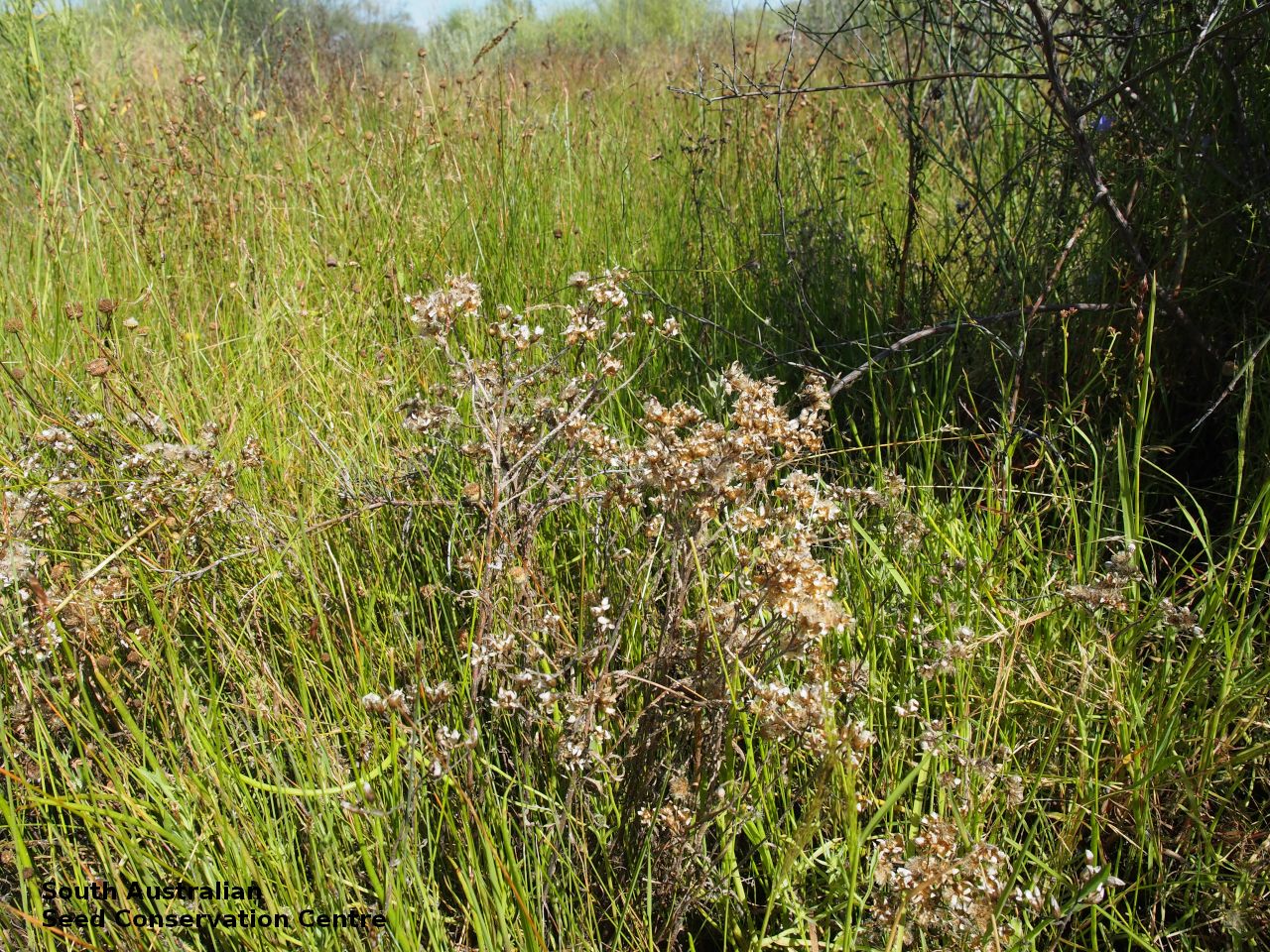
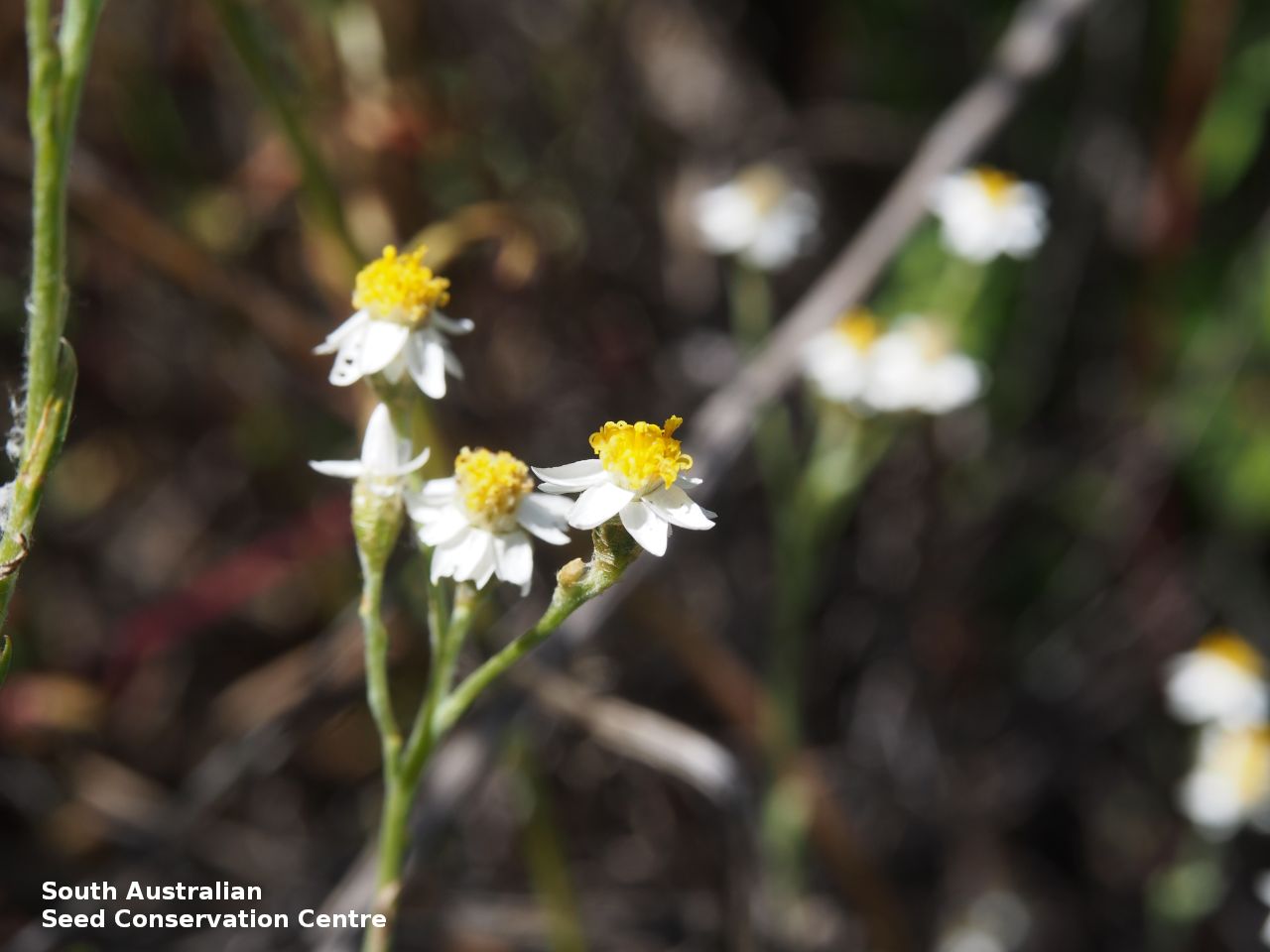
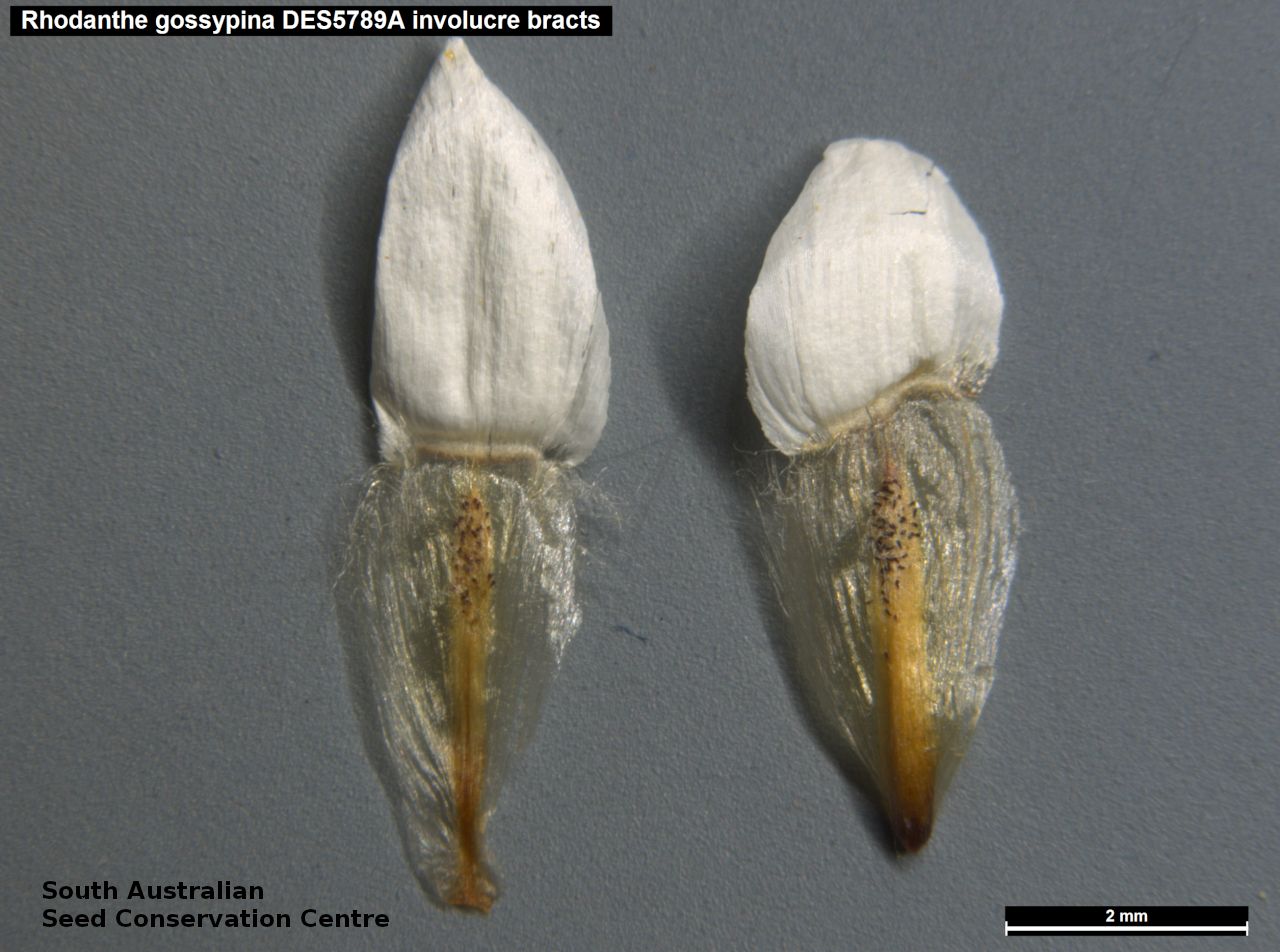
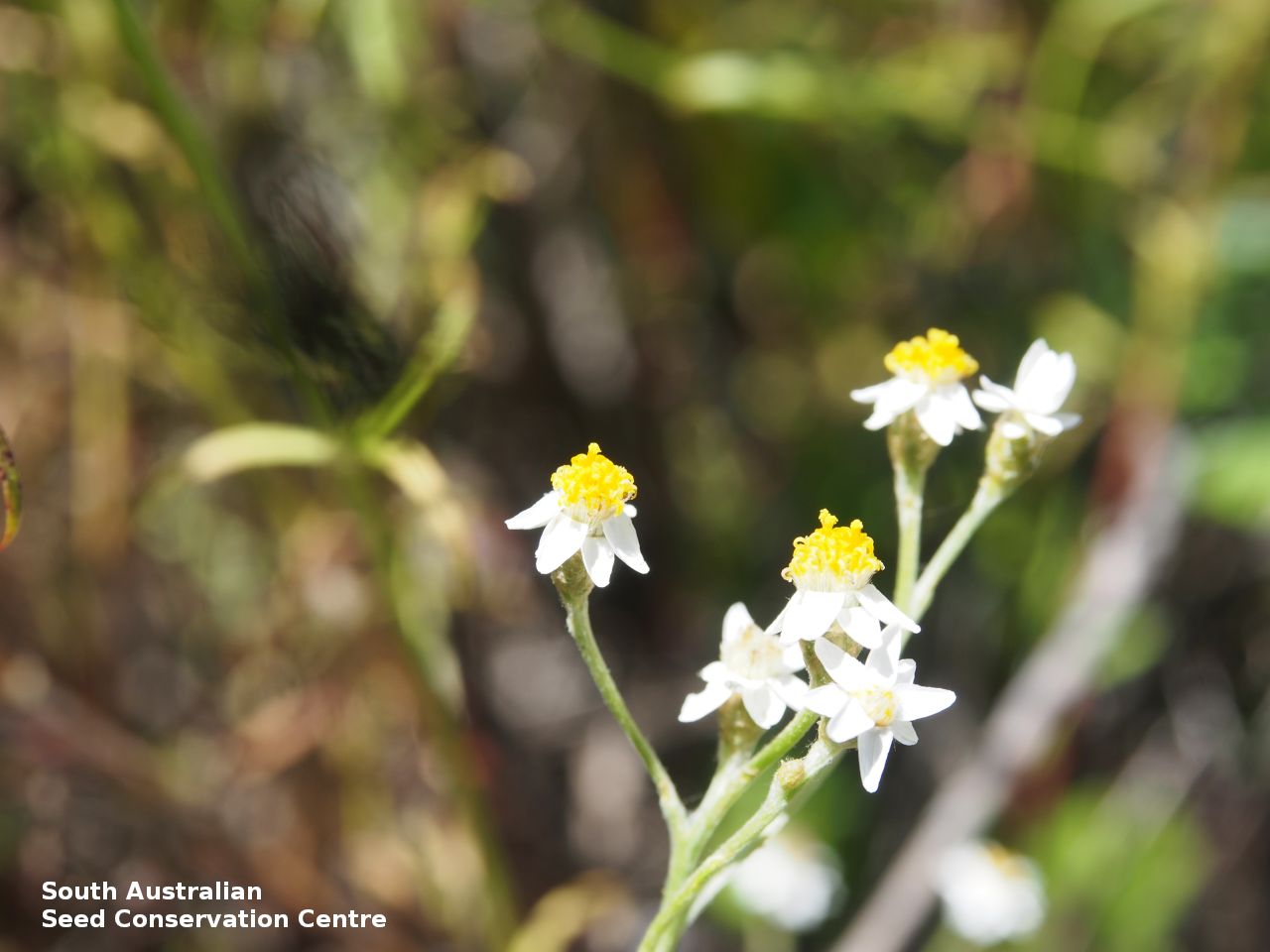
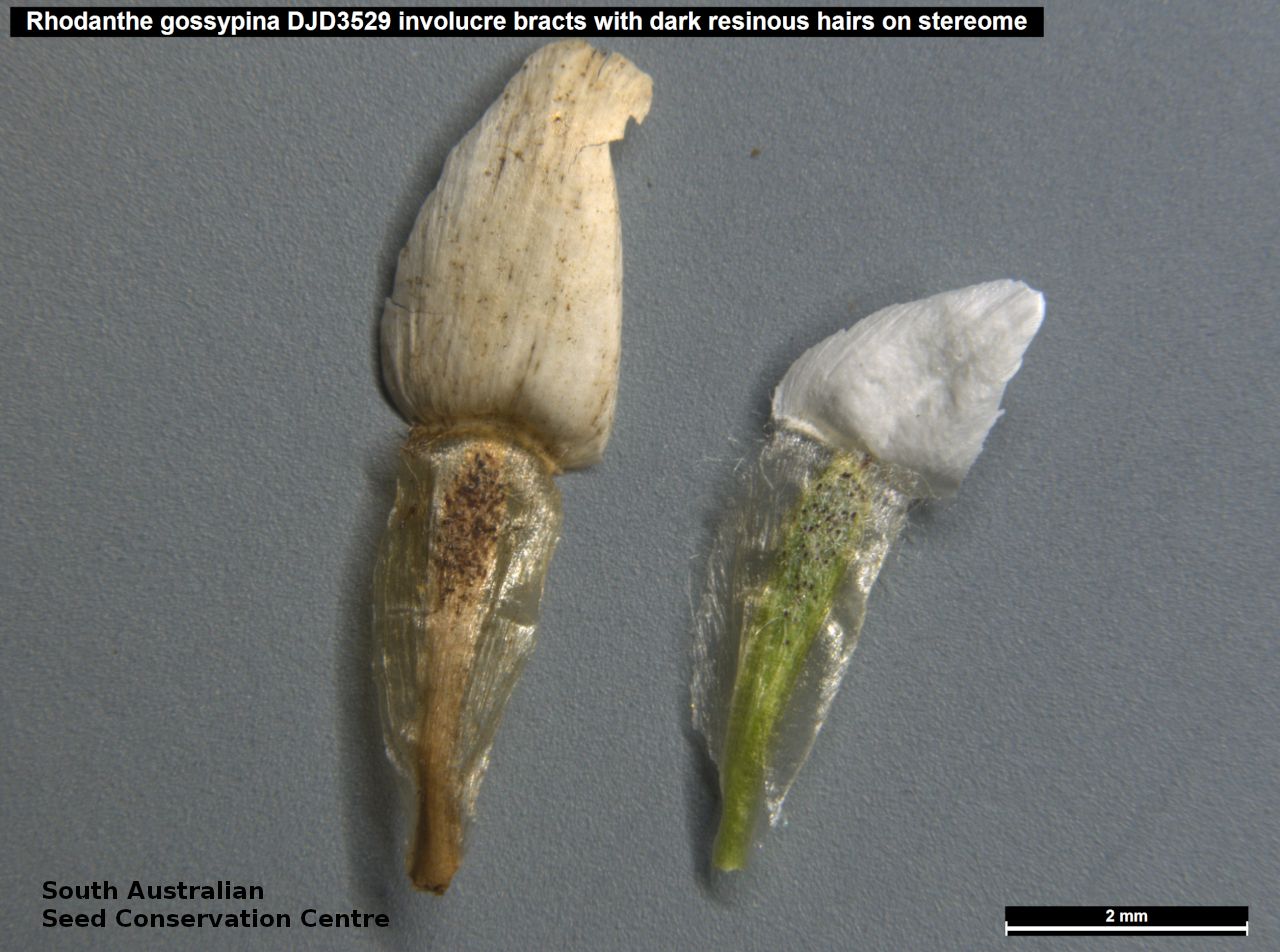
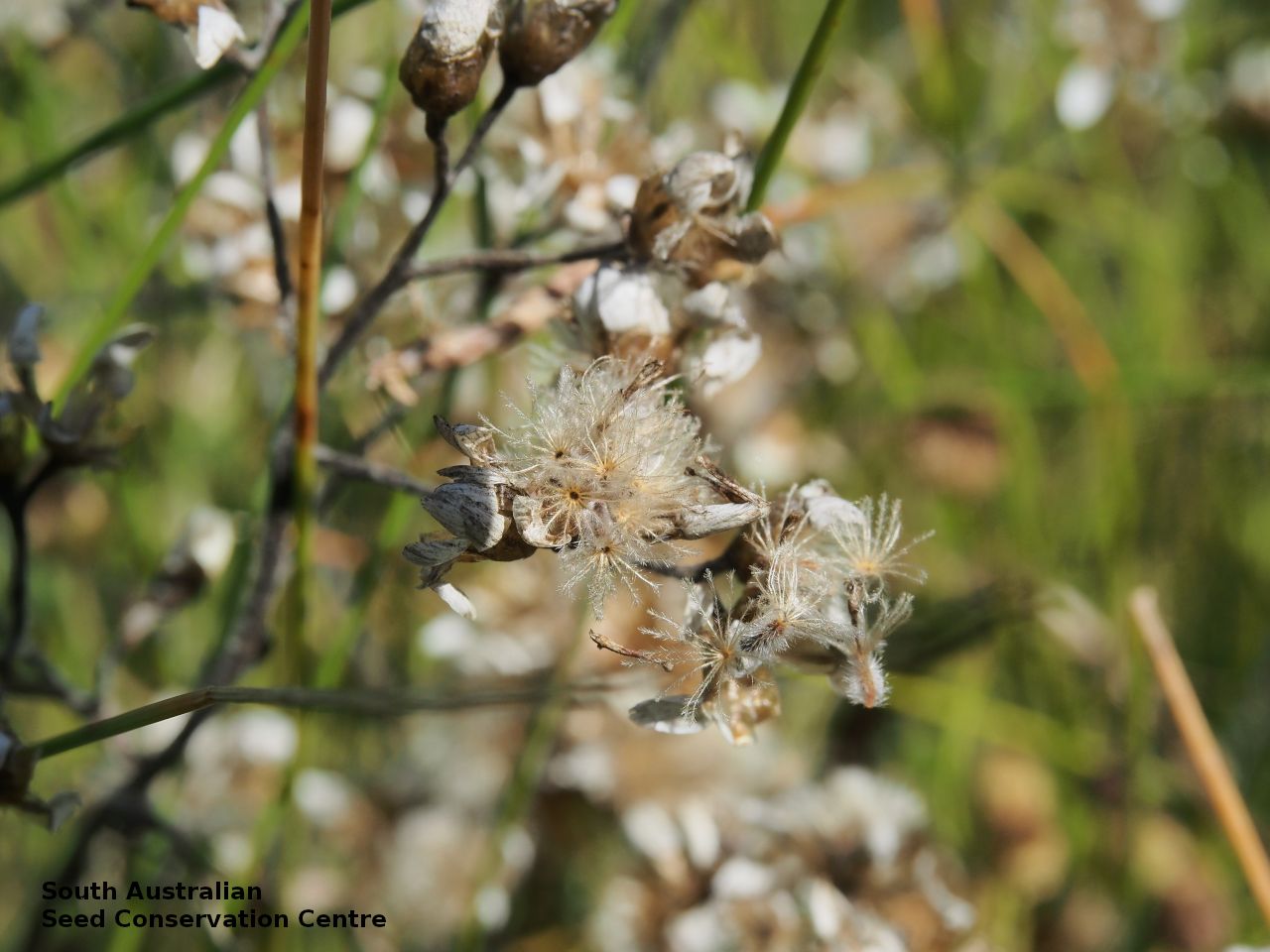
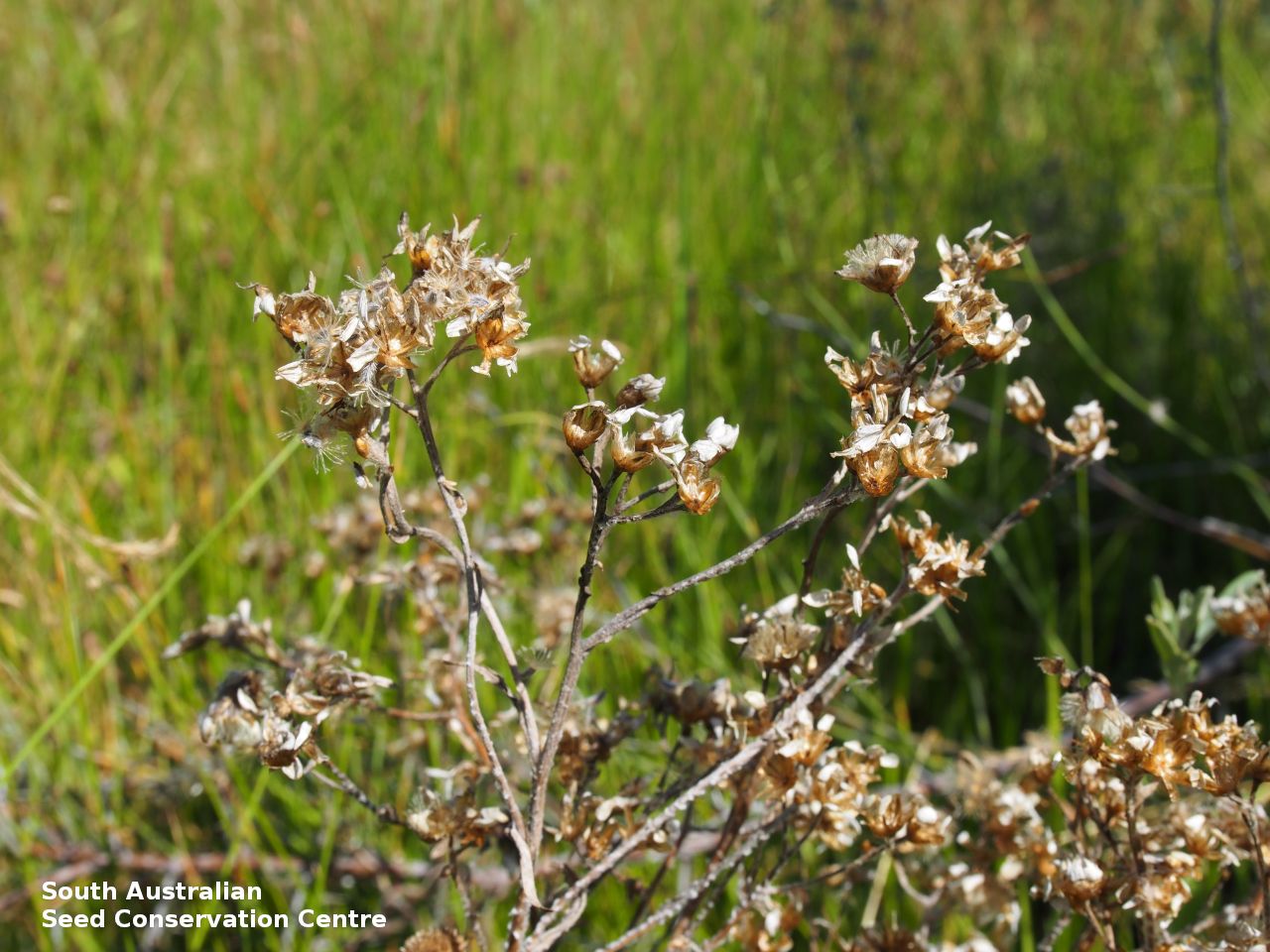
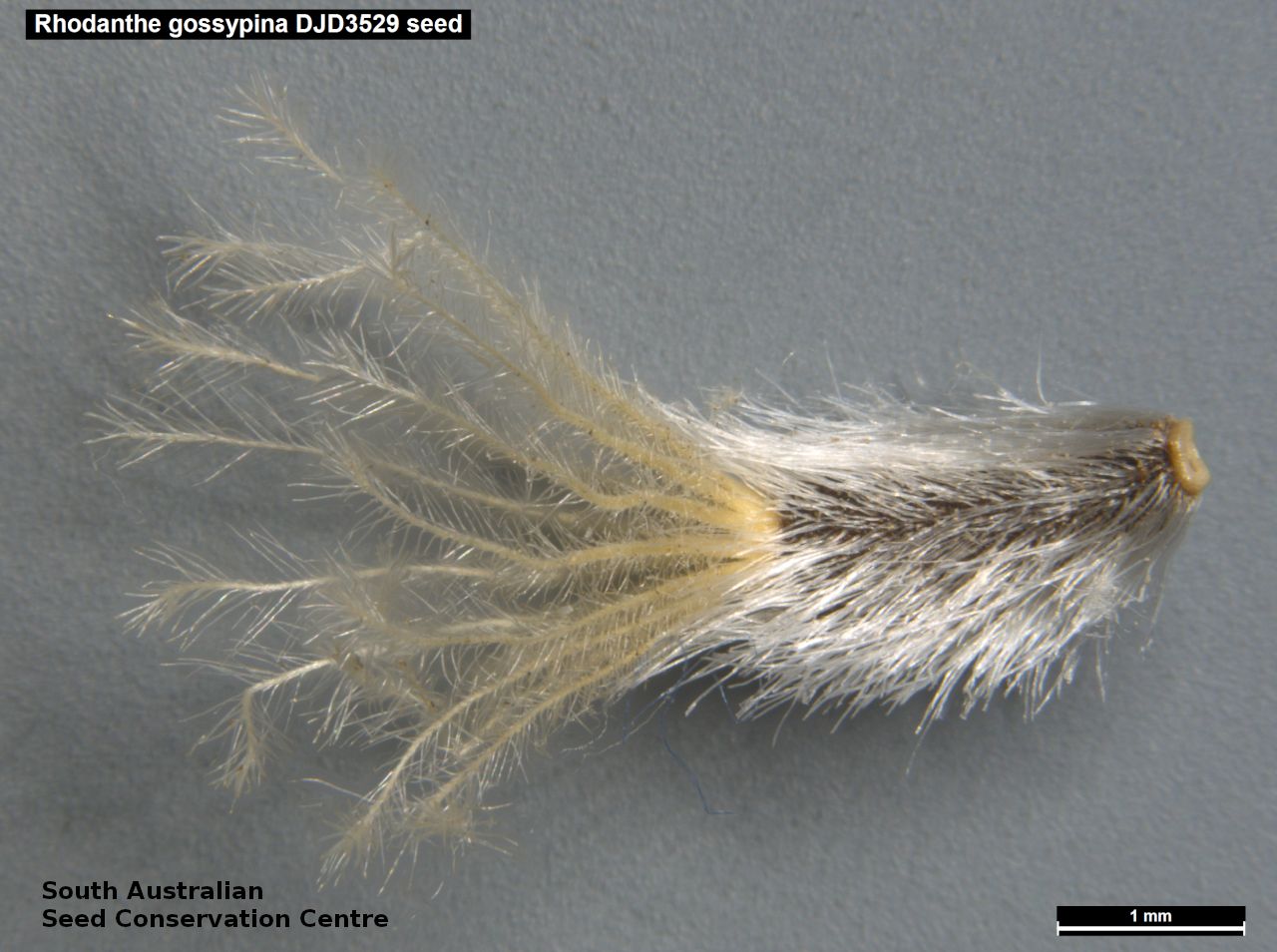
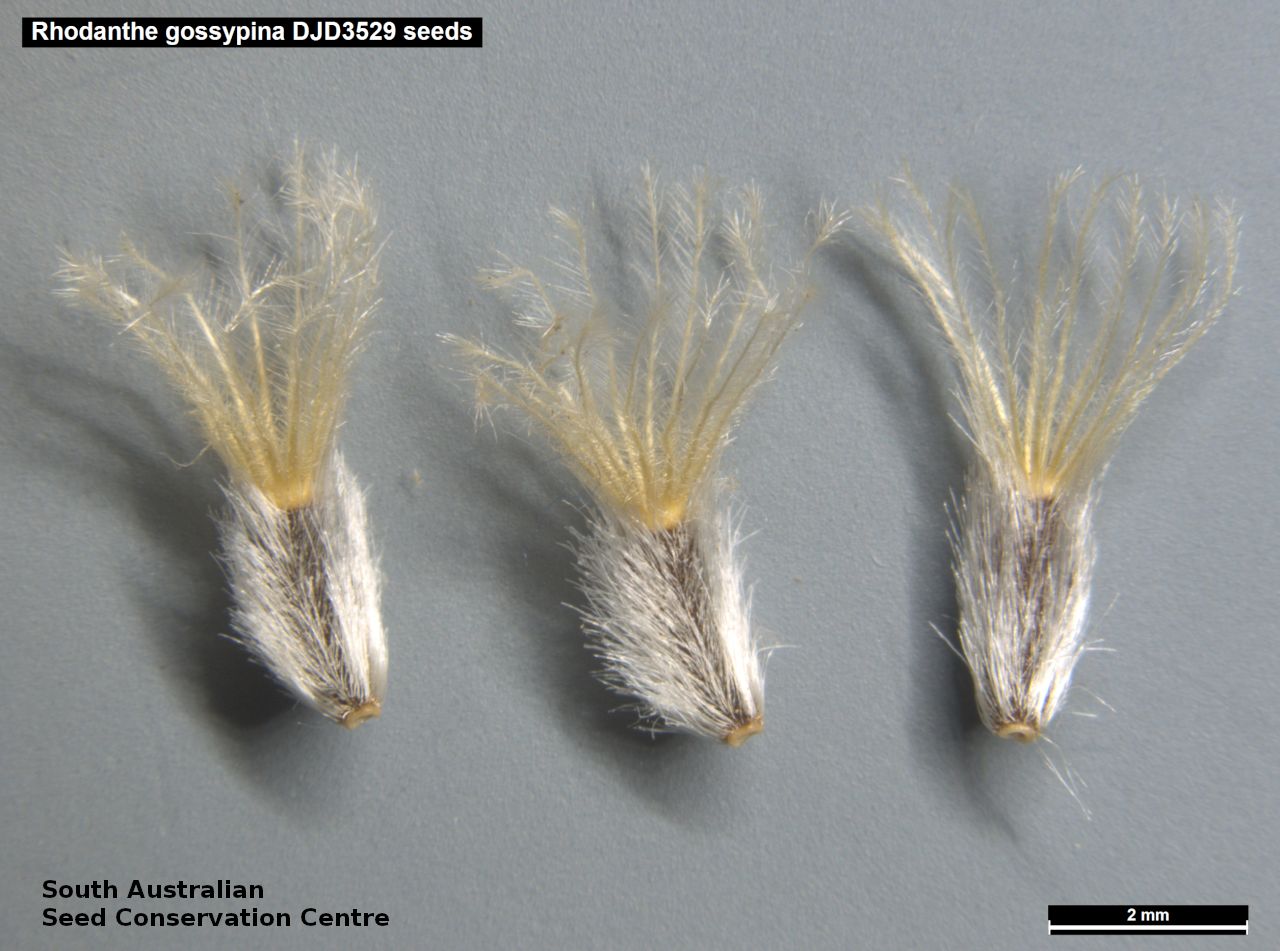
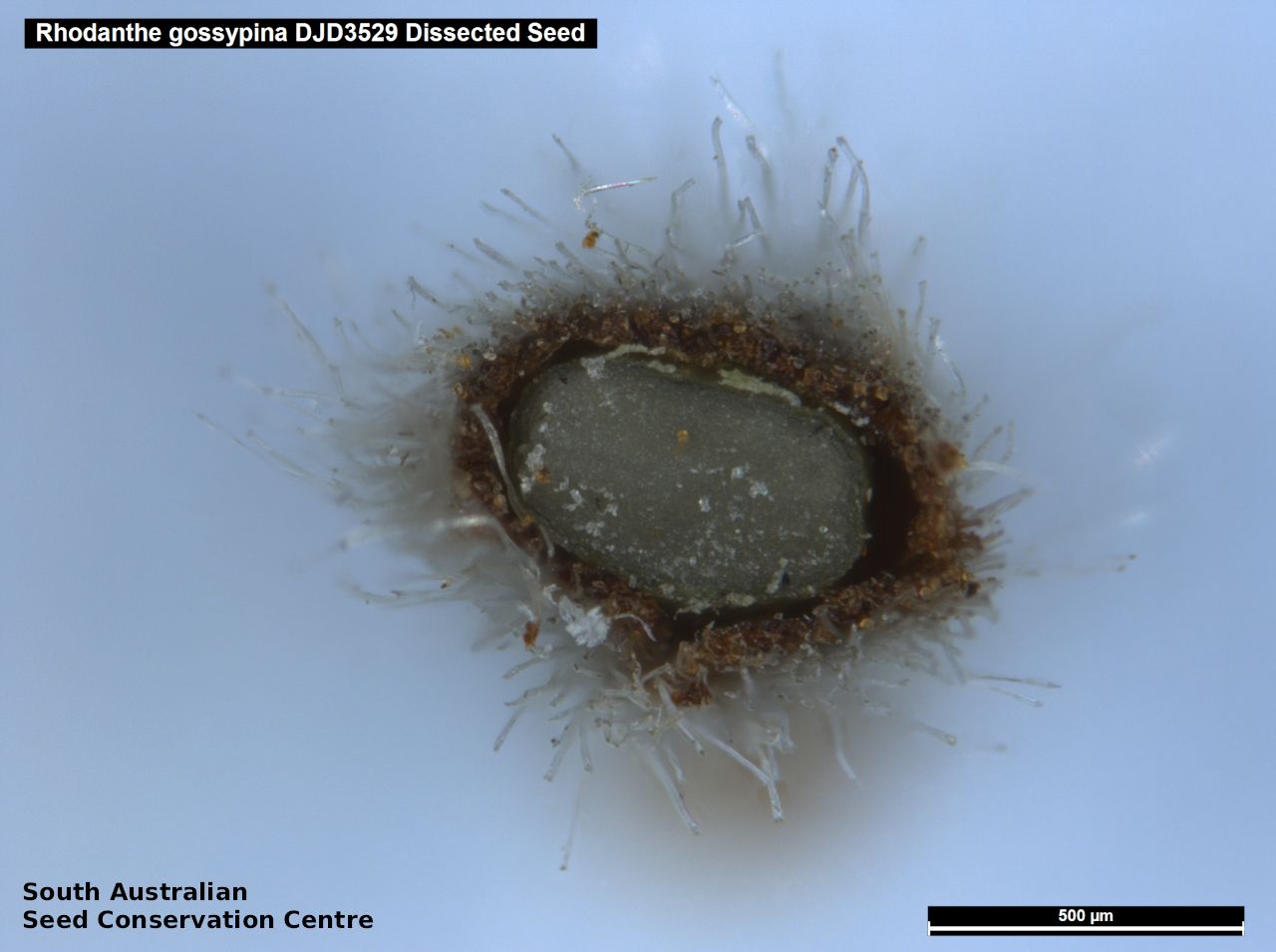


Etymology
Rhodanthe from the Greek 'rhodon' meaning a rose and 'anthos' meaning a flower; referring to the rose-like flowers of Rhodanthe manglesii, the type for the genus. Goosypina from the Latinised form of the Arabic name 'goz' for a soft substance (cotton), referring to the cotton-like hairs covering the plant.
Distribution and status
Found in the far north-eastern corner of South Australia, growing on heavy soil in open situations that is frequently flooded. Also found in the Northern Territory and Queensland. Native. Rare in South Australia. Rare in the Northern Territory. Common in Queensland.
Herbarium region: Lake Eyre
NRM region: South Australian Arid Lands
AVH map: SA distribution map (external link)
Plant description
Erect annual herb to 20 cm high covered in cotton-like hairs. Leaves linear to narrow-oblong to 4 cm long and 5 mm wide. Inflorescence in terminal clusters with paper daisy flowers. Flowering between June and September. This species is similar to Rhodanthe corymbiflora and R. microglossa from which it can be distinguished having a more open inflorescence, smaller involucre with bract-lamina about halft as long, having dark resinous hairs on the stereome of the inner bracts and having a smooth throat to the corolla. Fruits are brown fluffy daisy head. Seeds are brown oblong seed to 2.3 mm long and 0.7 mm wide, covered in pale brown hairs and long pappus. Seed embryo type is spatulate fully developed.
Seed collection and propagation
Collect seeds between September and November. Collect heads that are matured, those that are drying off, fat, turning a straw colour seeds and seeds come off easily if you pull it out with your fingers. Place the heads in a tray and leave to dry for a week. Then rub the heads gently by hand or with a rubber bung to dislodge the seeds. Use a sieve to separate the unwanted material. Store the seeds with a desiccant such as dried silica beads or dry rice, in an air tight container in a cool and dry place. From one collection, the seed viability was average, at 70%.
| Location | No. of seeds (weight grams) | Number of plants | Date collected | Collection number Collection location | Date stored | % Viability | Storage temperature |
|---|---|---|---|---|---|---|---|
| BGA MSB | 10,000 (7.16 g) 10,000 (7.16 g) | 100+ | 20-Oct-2016 | DJD3529 Lake Eyre | 1-Nov-2017 | 70% | +5°C, -18°C, -80°C |
Number of plants: This is the number of plants from which the seeds were collected.
Collection location: The Herbarium of South Australia's region name.
% Viability: Percentage of filled healthy seeds determined by a cut test or x-ray.